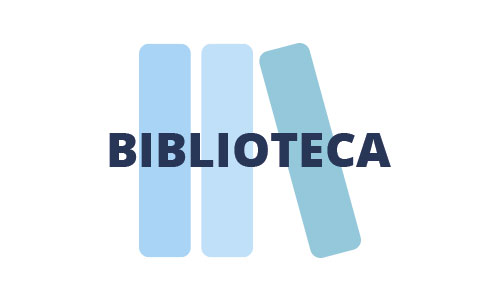Francisco Cazorla López

Francisco Cazorla López
Profesor Titular de Universidad
Tel: 952137587 E-mail: cazorla@uma.es
Despacho: Ciencias
BREVE CURRÍCULUM:
La formación académica y las distintas posiciones obtenidas a lo largo del tiempo se resumen a continuación: Becario (1992-1993, Fundación para la Investigación Agraria de la Provincia de Almería); Licenciatura en Ciencias Biológicas (Julio 1991, Universidad de Málaga –UMA-); Doctor en Ciencias Biológicas (Julio 1998, UMA); Investigador Postdoctoral (1998-1999, UMA); Investigador Postdoctoral “Marie Curie” (2000-2002, Universidad de Leiden, Países Bajos); Profesor Ayudante de Facultad (Octubre 2001-Octubre 2004, UMA); Profesor Contratado Doctor Permanente (Octubre 2004-Agosto 2009, UMA), Profesor Titular de Universidad (Agosto 2009-noviembre 2017, UMA), y finalmente Catedrático de Universidad (noviembre 2017 - actualidad. En cuanto a la participación en proyectos y contratos de investigación, ha participado en 32 proyectos de I + D financiados en convocatorias públicas (9 como IP), y en 11 contratos de I+D de especial relevancia con Empresas y/o Administraciones (3 como coordinador). Los resultados de su investigación quedan reflejados en la autoría de 143 Publicaciones o Documentos Científico-Técnicos, 14 publicaciones divulgativas, y 236 comunicaciones a congresos (103 internacionales, 133 nacionales, de las cuales 5 ponencias invitadas, y 5 de ellas premiadas). Finalmente, ha dirigido 10 Tesis Doctorales que han obtenido la máxima calificación, además de 12 Tesis de Licenciatura (que también obtuvieron la máxima calificación) y 3 trabajos fin de carrera dirigidos en la Universidad de Leiden, con calificaciones de 7,5, 8 y 8,5 sobre 10.
-------------------------------------------------------------------------------------------------------------------------
DOCENCIA EN:
-Principios, Instrumentación y Metodología en Genética y Microbiología. 1º curso Grado Biología
-Biotecnología Medioambiental. 3º curso Grado Bioquímica
-Técnicas Experimentales en Biología Celular y Molecular II. Máster Biología Celular y Molecular
-Patologías Microbianas de Plantas. Máster en Biología Celular y Molecular
-Avances en Biología Celular y Molecular. Máster en Biología Celular y Molecular
-------------------------------------------------------------------------------------------------------------------------
INVESTIGACIÓN EN:
Proyectos y contratos de investigación vigentes:
Estrategias de control biológico eficientes contra Rosellinia necatrix: de la genómica funcional al campo.
Ent. Financiadora: Ministerio de Economía, Industria y Competitividad (AGL2017-83368-C2-1-R)
Ent. Participantes: Universidad de Málaga, CSIC
Duración: 2018-20
Investigador responsable: Dr. F.M. Cazorla
Nº de investigadores participantes: 4 Cuantía total: 169.000,00 €
Adecuación y transferencia de un protocolo para la prevención de enfermedades postcosecha en frutos de mango y aguacate.
Ent. Financiadora: PAIDI 2020, Junta de Andalucía (AT17_5544_UMA; ID 5544)
Ent. Participantes: Universidad de Málaga
Duración: 2020-21
Investigador responsable: Dr. F.M. Cazorla
Nº de investigadores participantes: 8 Cuantía total: 44.400,00 €
Estudio de una comunidad microbiana sintética como modelo de interacción multitrófica durante el control biológico en la rizosfera frente a hongos fitopatógenos.
Ent. Financiadora: Programa Operativo FEDER 2014-2020, Junta de Andalucía, Andalucía Tech (UMA18-FEDERJA-046)
Ent. Participantes: Universidad de Málaga
Duración: 2019-22
Investigador responsable: Dr. F.M. Cazorla
Nº de investigadores participantes: 4 Cuantía total: 36.572,49 €
Selección, identificación y producción de microorganismos con actividad de biocontrol. Acuerdo de Investigación y Desarrollo y licencia explotación de las cepas de Bacillus subtilis UMAF6614 y 6639 para su registro y aplicación como biofertilizantes y biofungicidas
Tipo Contrato: Acuerdo de Investigación y Desarrollo y licencia de explotación. Art. 83 LOU (806/60.4086).
Ent. financiadora: Koppert B.V.
Ent. participantes: Koppert B.V. y Universidad de Málaga.
Duración: 2019-2023.
Investigador Responsable: Dr. JA. Pérez-García.
Nº de investigadores participantes: 4
PRECIO TOTAL DEL PROYECTO: 686.500,00 €. + 1,5% ventas durante 10 años como royalties
Realización de un estudio experimental sobre los hongos causantes de la seca de ramas en aguacate, con la finalidad de proponer el tratamiento antifúngico más adecuado.
Tipo Contrato: Art. 83 LOU (8.06/5.60.5345, -1, -2)
Ent. financiadora: TROPS-SAT 2803, Viveros Blanco y Viveros Brokaw.
Ent. participantes: Universidad de Málaga.
Duración: 2019-21.
Investigador Responsable: Dr. F. M. Cazorla.
Nº de investigadores participantes: 5
PRECIO TOTAL DEL PROYECTO: 70.560,00 €.
Analysis for soil biodiversity in agricultural plots sites in Spain, como parte del Proyecto piloto AgBio.
Tipo Contrato: 8.06/6.17.5576
Ent. financiadora: Syngenta Crop Protection AG.
Ent. participantes: Universidad de Málaga.
Duración: 2020-22.
Investigador Responsable (Parte Microbiología): Dr. F. M. Cazorla.
Nº de investigadores participantes (Microbiología): 7
PRECIO TOTAL DEL PROYECTO: 105.530,00 €.
-------------------------------------------------------------------------------------------------------------------------
PREMIOS:
Premio "Doctor Esteban Pérez-Bryan Souviron" para Tesis Doctorales leídas en las Facultades de Medicina y Ciencias de la Universidad de Málaga. 2 de Diciembre de 1999.
-------------------------------------------------------------------------------------------------------------------------
PUBLICACIONES (últimos 7 años):
-Crespo, M., F.M. Cazorla, S. Freeman, J.A. Torés y A. de Vicente. Diagnosis and diversity of the Fusarium spp. isolates causing mango malformation in Southern Spain. IOBC/wprs Bulletin 110:117-118 (2015).
-Puig, M., C. Moragrega, L. Ruz, C.E. Calderón, F.M. Cazorla, E. Montesinos e I. Llorente. Interaction of antifungal peptide BP15 with Stemphylium vesicarium, the causal agent of brown spot of pear. FUNGAL BIOLOGY 120:61-71 (2016). DOI: 10.1016/j.funbio.2015.10.007
-Arrebola, E., F.M. Cazorla y A. de Vicente. 25 años de estudio de la necrosis apical del mango causada por Pseudomonas syringae pv. syringae. Boletin SEF 95:18-25 (2016).
-Vida, C., N. Bonilla, A. de Vicente y F.M. Cazorla. Microbial profiling of a suppressiveness-induced agricultural soil amended with composted almond shells. In: “Harnessing useful rhizosphere microorganisms for pathogen and pest biocontrol”, Ciancio, A., Pieterse, C.M.J. y Mercado-Blanco, J. (eds.). DOI: 10.3389/978-2-88945-059-6. Frontiers Media, Lausanne (Suiza). pp. 77-90. (2016)
-Vida, C., A. de Vicente y F.M. Cazorla. Draft genome sequence of the rhizobacterium Pseudomonas chlororaphis PCL1606, displaying biocontrol against soilborne phytopathogens. GENOME ANNOUNCEMENTS, 5 (14): E00130-17 (2017).
-Gutiérrez-Barranquero, J.A., F.M. Cazorla, A. de Vicente y G.W. Sundin. Complete sequence and comparative genomic analysis of eight native Pseudomonas syringae plasmids belonging to the pPT23A family. BMC GENOMICS, 18: 365 (2017). Doi: 10.1186/2864-017-3763-x
-Polonio, A., C. Vida, A. de Vicente y F.M. Cazorla. Impact of motility and chemotaxis features of the rhizobacterium Pseudomonas chlororaphis PCL1606 on its biocontrol of avocado white root rot. INTERNATIONAL MICROBIOLOGY, 20 (2): 95-104 (2017). Doi: 10.2436/20.1501.01.289.
-Vida, C, F.M. Cazorla y A. de Vicente. Characterization of biocontrol bacterial strains isolated from a suppressiveness-induced soil after amendment with composted almond shells. RESEARCH IN MICROBIOLOGY, 168: 583-593 (2017). Doi: 10.1016/j.resmic.2017.03.007.
-Vida, C., D. Ruano-Rosa, C. Escaño, I. Arjona-Girona, N. Bonilla, A. de Vicente, F.M. Cazorla y C.J. López-Herrera. Capítulo 16. Control biológico de la podredumbre blanca radicular del aguacate. Control Biológico de Enfermedades Vegetales. A. de Cal y P. Melgarejo (Eds.). Phytoma. 122-128. (2017).
-Arrebola, E., A. de Vicente, F.M. Cazorla y J.A. Torés. Capítulo 31. Control biológico en frutos tropicales. Control Biológico de Enfermedades Vegetales. A. de Cal y P. Melgarejo (Eds.). Phytoma. 234-242. (2017).
-Gutiérrez-Barranquero, J.A., F.M. Cazorla, J.A. Torés y A. de Vicente. Pantoea agglomerans as a new etiological agent of a bacterial necrotic disease of mango tres. PHYTOPATHOLOGY, 109: 17-26 (2019). Doi: 10.1094/PHYTO-06-18-0186-R.
-Pliego, C., J.I. Crespo-Gómez, A. Pintado, I. Pérez-Martínez, A. de Vicente, F.M. Cazorla y C. Ramos. Response of the biocontrol agent Pseudomonas pseudoalcaligenes AVO110 to Rosellinia necatrix exudate. APPLIED AND ENVIRONMENTAL MICROBIOLOGY 85: e01741-18 (2019). Doi: 10.1128/AEM.01741-18.
-Biessy, A., A. Novinscak, J. Blom, G. Léger, L.S. Thomashow, F.M. Cazorla, D. Josic y M. Filion. Diversity of phytobeneficial traits revealed by whole-genome analysis of worldwide-isolated phenazine-producing Pseudomonas spp. ENVIRONMENTAL MICROBIOLOGY. 21: 437-455 (2019). Doi: 10.1111/1462-2920.14476.
-Calderón, C., S. Tienda, Z. Heredia-Ponce, E. Arrebola, G. Cárcamo-Oyarce, L. Eberl y F.M. Cazorla. The compound 2-hexyl, 5-propyl resorcinol has a key role in biofilm formation by the biocontrol rhizobacterium Pseudomonas chlororaphis PCL1606. FRONTIERS IN MICROBIOLOGY 10: 396. Doi: 10.3389/fmicb.2019.00396 (2019).
-de Vicente, A., A. Pérez-García y F.M. Cazorla. Capítulo 1. Bacterias fitopatógenos: introducción a su biología, ecología y taxonomía. En: ENFERMEDADES DE PLANTAS CAUSADAS POR BACTERIAS. M.M. López, J. Murillo, E. Montesinos y A. Palacio-Bielsa (eds.). SEF y Bubok Publishing S.L., Madrid 2019. pp 33-57 (ISBN: 978-84-685-3302-5)
-Cazorla, F.M., J. Murillo y A. de Vicente. Capítulo 15. Género Pseudomonas. En: ENFERMEDADES DE PLANTAS CAUSADAS POR BACTERIAS. M.M. López, J. Murillo, E. Montesinos y A. Palacio-Bielsa (eds.). SEF y Bubok Publishing S.L., Madrid 2019. pp 317-322 (ISBN: 978-84-685-3302-5))
-Cazorla, F.M. y A. de Vicente. Necrosis apical del mango causada por Pseudomonas syringae pv. syringae. En: ENFERMEDADES DE PLANTAS CAUSADAS POR BACTERIAS. M.M. López, J. Murillo, E. Montesinos y A. Palacio-Bielsa (eds.). SEF y Bubok Publishing S.L., Madrid 2019. pp 341-354 (ISBN: 978-84-685-3302-5))
-Arrebola, E., S. Tienda, C. Vida, A. de Vicente y F.M. Cazorla. Fitness features involved in the biocontrol interaction of Pseudomonas chlororaphis with host plants: the case study of PcPCL1606. FRONTIERS IN MICROBIOLOGY 10: 719. Doi: 10.3389/fmicb.2019.00719 (2019).
-Molina-Santiago, C., J. R. Pearson, Y. Navarro, M. V. Berlanga-Clavero, A. M. Caraballo-Rodríguez, D. Petras, M. L. García-Martín, G. Lamon, B. Haberstein, F. M. Cazorla, A. de Vicente, A. Loquet, P. C. Dorrestein y D. Romero. The extracellular matrix protects Bacillus subtilis colonies from Pseudomonas invasion and modulates plant co-colonization. NATURE COMMUNICATIONS 10: 1919. Doi: 10.1038/s41467-019-09944-x (2019).
-Gutierrez-Barranquero, J.A., F.M. Cazorla y A. de Vicente. Pseudomonas syringae pv. syringae associated with mango trees, a particular pathogen within the “hodgepodge” of the Pseudomonas syringae complex. FRONTIERS IN PLANT SCIENCE 10: 570. Doi: 10.3389/fpls.2019.00570 (2019).
-Gutierrez-Barranquero, J.A., F.M. Cazorla, J.A. Torés y A. de Vicente. First report of Pantoea ananatis causing necrotic symptoms in mango trees in the Canary Islands, Spain. PLANT DISEASE 103: 1017. Doi: 10.1094/PDIS-10-18-1903-PDN (2019).
-Pérez-Bueno, M.L., M. Pineda, C. Vida, D. Fernández-Ortuño, J.A. Torés, A. de Vicente, F.M. Cazorla y M. Barón. Detection of white root rot in avocado trees by remote sensing. PLANT DISEASE 103:1119-1125 (2019). Doi: 10.1094/PDIS-10-18-1778-RE
-López-Arjona, J.M., S. Tienda, I. Arjona-Girona, F.M. Cazorla y C.J. López-Herrera. Combination of low concentrations of fluazinam and antagonistic rhizobacteria to control avocado white root rot. BIOLOGICAL CONTROL 136:103996 (2019). Doi: 10.1016/J.BIOCONTROL.2019.05.015
-Zumaquero, A., S. Kanematsu, H. Nakayashiki, A. Matas, E. Martínez-Ferri, A. Barceló-Muñóz, F. Pliego-Alfaro, C. López-Herrera, F.M. Cazorla y C. Pliego. Transcriptome analysis of the fungal pathogen Rosellinia necatrix during infection of a susceptible avocado rootstock identifies potential mechanisms of pathogenesis. BMC GENOMICS 20: 1016. (2020) Doi: 10.1186/s12864-019-6387-5
-Vida, C., A. de Vicente y F.M. Cazorla. The role of organic amendments to soil for crop protection: Induction of suppression of soilborne pathogens. ANNALS OF APPLIED BIOLOGY 176:1-15 (2020). Doi: 10.1111/aab.12555
-Kamou, N.N., F.M. Cazorla, G. Kandylas y A. Lagopodi. Induction of defense-related genes in tomato plants after treatments with the biocontrol agents Pseudomonas chlororaphis ToZa7 and Clonostachys rosea IK726. ARCHIVES OF MICROBIOLOGY 202; 257-267 (2020). Doi: 10.1007/s00203-019-01739-4
-Arrebola, E., y F.M. Cazorla. Aer receptors influence the Pseudomonas chlororaphis PCL1606 lifestyle. FRONTIERS IN MICROBIOLOGY 11: 1874 (2020). Doi: 10.3389/FMICB.2020.01560
-Tienda, S., C. Vida, E. Lagendijk, S. de Weert, I. Linares, J. González-Fernández, E. Guirado, A. de Vicente, y F.M. Cazorla. Soil application of a formulated biocontrol rhizobacterium, Pseudomonas chlororaphis PCL1606, induces soil suppressiveness by impacting specific microbial communities. FRONTIERS IN MICROBIOLOGY 11: 1560 (2020). Doi: 10.3389/FMICB.2020.01874
-Heredia-Ponce, Zaira, J.A. Gutiérrez-Barranquero, G. Purtschert-Montenegro, L. Eberl, F.M. Cazorla y A. de Vicente. Biological role of EPS from Pseudomonas syringae pv. syringae UMAF0158 extracellular matrix, focusing on a Psl-like polysaccharide. BIOFILMS AND MICROBIOMES 6: 37 (2020). Doi: 10.1038/S41522-020-00148-6
-Cámara-Almirón, J., C. Molina-Santiago, A. Pérez-García, A. de Vicente, F.M. Cazorla y D. Romero. Understanding bacterial physiology for improving full fitness. How research can stimulate the development of commercial biocontrol against plant diseases, PROGRESS IN BIOLOGICAL CONTROL (A de Cal et al., Eds.). Springer Nature Switserland AG (2020), pp. 47-60
-F. Aprile, Heredia-Ponce, Z., Cazorla, F.M., de Vicente, A. y Gutiérrez-Barranquero, J.A. A large Tn7-like transposon confers hyperresistance to copper in Pseudomonas syringae pv. syringae. APPLIED AND ENVIRONMENTAL MICROBIOLOGY 87:e02528-20, 19 pp. (2021). Doi:10.1128/AEM.02528-20
-------------------------------------------------------------------------------------------------------------------------







